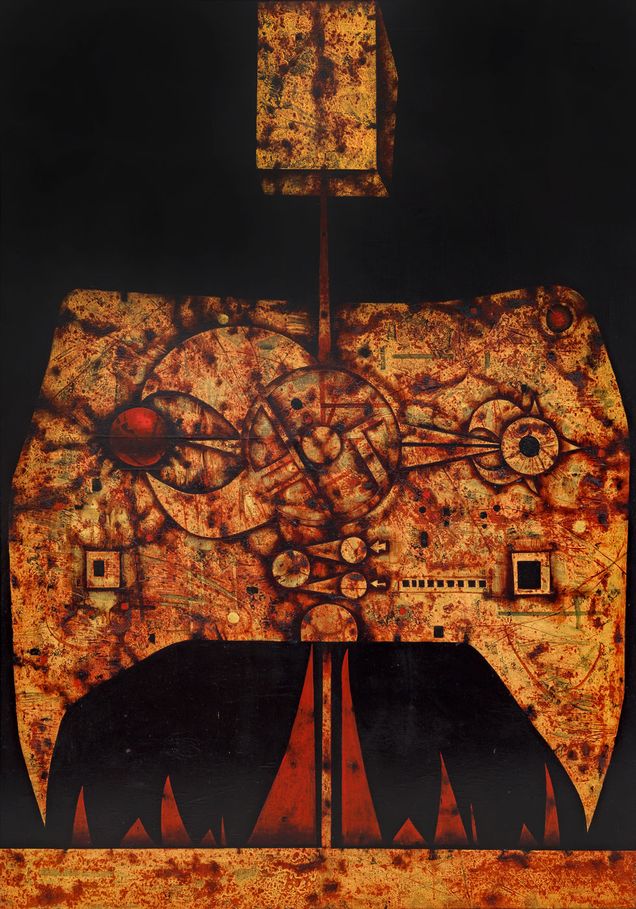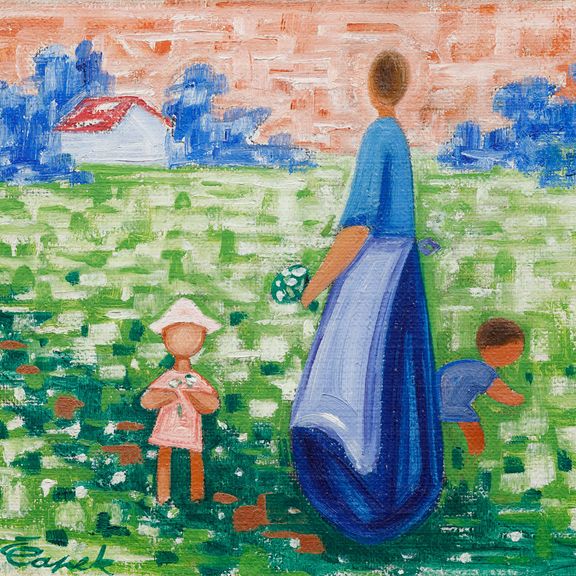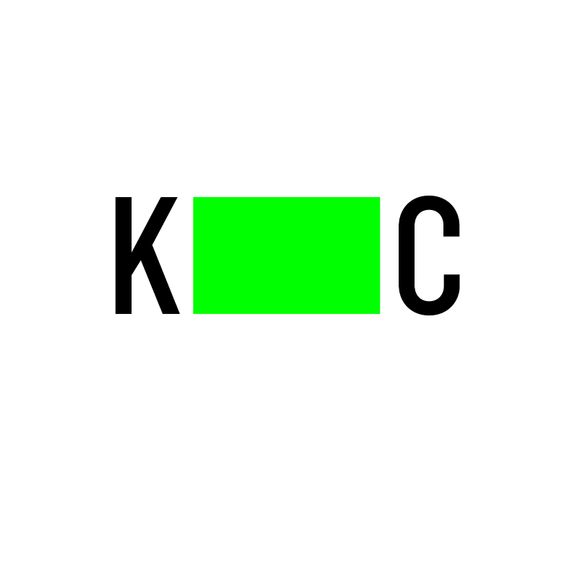
mixed media (oil, enamel) on canvas
1972
not signed
170 × 120 cm
frame
Starting price: 9,000,000 CZK Final price: 14,400,000 CZK
88th Auction, lot 57 This monumental painting, Angel of Evil Birds I, by one of the most important representatives of Czech post-war art comes from the final stage of Medek’s life, which was by no means easy for him. Not only did he struggle with serious health problems, but also a difficult period of normalisation in Czechoslovakia began, opening up old wounds from the 1950s for him – he could not exhibit, planned realisations were rejected, and his upcoming monograph was banned. It is unbelievable how many paintings Medek executed during this time; it would be approximately the same number as in the early 1960s, when his work was in a phase of creative expansion. At the same time, he was not only copying or multiplying old subject-matters, but moreover developing them into new visual structures. Around 1970, a red frame became a dominant feature of his works, related to a principle of “a picture within a picture”, which had previously interested Medek. It can be seen, for example, in his work Miraculous Mother V, and with one side open in Ivishka II and The Beguines I–III (all from 1970). Medek got acquainted with the medieval movement of Beguines through a book he read, where it was written that the reason for the condemnation of these religious orders was their mystical practices of somnambulism and masochism and the belief that the “Epoch of the Holy Spirit” begins, which must be preceded by a heavy fight with the Antichrist. Therefore, Medek’s paintings The Beguines I–III seem almost “frantic”, as if warning of a threat. Medek further elaborated this motif of “an announcement of threat” in his set Angels, on which he worked from the early 1970s in four series: Thirsty Angels (1970–1973), Angels of the Painful Window (1970), Thirsty Angels in a Window (1970–1973), and Angels of Evil Birds and Dancing Angels of the Black Grim Reaper (1972), to which belong the presented monumental work. The subject-matter of this large series is reminiscent of Angels by Paul Klee, an artist whose work had enchanted Medek in his artistic beginnings. Klee returned to this subject-matter several times in his work, but developed it mostly around 1993 as a premonition of his own death. It is hard to guess whether Medek turned to the angels led by the same incentive, but we certainly do not see in his works the burdensome and anxious heaviness as in the works of Paul Klee. This series of monumental spiritually exalted and suggestive paintings is one of the highlights of the artist’s work. The presented painting was part of the exposition on Mikuláš Medek in Prague’s Rudolfinum (published in the catalogue on p. 157). It was exhibited for the first time at the private exhibition of Mikuláš Medek, which was held for a close circle of invitees shortly after his death (Letohradská 5, Prague 7, 20–22 September 1975, cat. no. 1). It was also presented at exhibitions: Medek’s solo exhibition at The Gallery of Modern Art in Roudnice nad Labem (1988, not included in the catalogue); solo exhibition at the National Gallery in Prague – Municipal Library (14 June – 5 August 1990, cat. No. 155, repro.), solo exhibition at the Rudolfinum gallery, Prague (2002, reproduced in the catalogue); solo exhibition Mikuláš Medek: Moving Graves (Galerie Zdeněk Sklenář, 30 August – 5 October 2014, cat. p. 29), and most recently at the exhibition Mikuláš Medek: Naked in Thorns, National Gallery, 2020 (reproduced in the catalogue on p. 147.) Assessed during consultations by prof. J. Zemina and PhDr. E. Kosáková-Medková, art historian and the artist’s daughter. The expertise by PhDr. K. Srp is attached.







